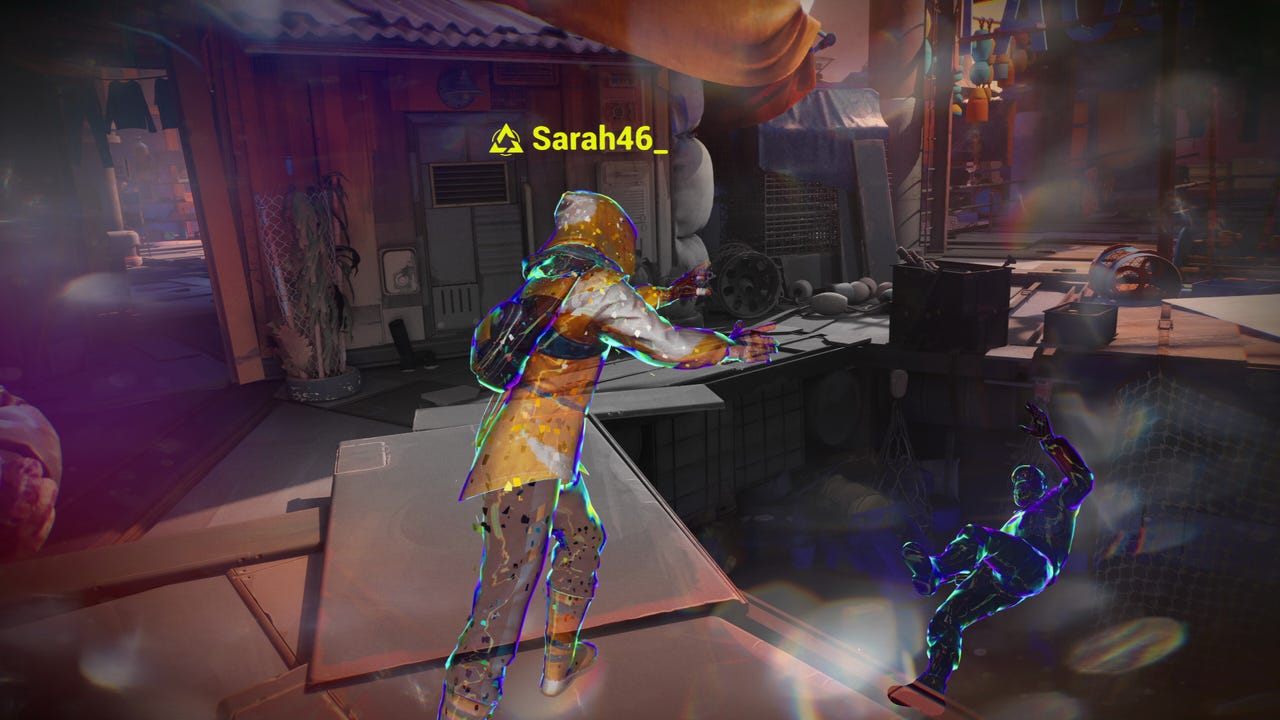Has Tides of Tomorrow cracked the narrative multiplayer formula?

In the last decade, some high-profile figures in the world of video game storytelling have predicted that the future of narrative design is in multiplayer. Developers like Supermassive Games and GenVid technologies have put money where their mouth is, developing methods for players to make collaborative choices in games like The Quarry and Silent Hill Ascension (your mileage may vary on how effective these systems were).
In any case, despite predictions from leaders like Skydance co-president of new media Amy Hennig, collaborative choice-driven storytelling hasn’t taken off. But just when that dream seemed dead, Road 96 developer Digixart revealed a new trailer for Tides of Tomorrow at the PlayStation State of Play in June. The sci-fi action adventure game comes with a fascinating narrative twist: not only do players make branching narrative choices that shape their journey, the consequences of those choices will filter out into the game sessions of other players via an online connection.
The system captures the payoff of Twitch Plays Pokémon-style collective input without frustrating players who wanted to go in another direction. Those choices will shape the next players’ choices, which will shape the next players’ choices, and so on and so forth.
The game also features a “ghost” system where players get short glimpses of other players navigating the same environment, a system made popular by the Dark Souls series and Elden Ring.
What does it take to create a system like this? According to Digixart producer Kevin Bard and game director Adrien Poncet, the team only conceived of the idea because they made Road 96, and executing it is only possible thanks to a very methodical pre-production process.
To make good storytelling mechanics, you need a story worth telling
In an interview, Bard and Poncet stressed that Digixart’s mission isn’t just necessarily to experiment with narrative mechanics, it’s to tell stories about themes directly tied to real-world conflicts. Road 96 was about escaping a totalitarian state, and Tides in Tomorrow is set in an oceanic post-apocalypse brought about by climate change.
“We wanted to do something about the climate crisis,” said Poncet. “That’s what led to the weird setting of the game.” He then explained that the seed of the multiplayer choice system was actually in a single-player system from Road 96, which was a procedurally-driven game where players run for the border multiple times. When players finished a run, they could leave unused money behind to benefit their next run.
“It was all single-player, but it sparked an idea which was ‘what if it was not just yourself, but several different players following each other and playing one after the other, doing stuff for the next person?'” he said. (Poncet did clarify he joined the team after many of these choices were made).
That’s where the pre-production process took over. The earliest version of this system was built in what Bard called a “prototext” (riffing on “prototype” in Unreal Engine). Digixart developers used this system to test choices and branching trees and how the consequences could filter to other game sessions, identifying what kind of choices were worth implementing, and others weren’t.

Image via Digixart/THQ Nordic.
The prototext generated quantitative data how often asynchronous choices would trigger in another player’s session, and the team asked players to assess if if their runs were “enjoyable” and “clearly understandable.” The choices that ranked highest sailed into production, the ones that didn’t sank to the bottom of the ocean.
Bard said that Iterating on story choices, characters, and plot beats was “kind of the easiest” part. The trickiest part as production progressed was that players still to this day don’t always understand how the asynchronous mechanics are impacting their games. “Some players never really understood. They were like ‘okay, I see ghosts, I’m confused,'” he said, alluding to the “ghost” system showing brief snippets of of other players’ game sessions.”
“Addressing that confusion required iterating on the UX design, like taking lessons from online role-playing games and having other players’ names float over their heads when they appear in the game. “We’re still iterating on that up until launch.”
Another bit of Road 96 inspiration that’s also helped Digixart communicate the system to players: end-of-level choice rundowns. These were first made popular with Telltale Games’ choice-driven adventure games that let players see what percentage of players made the same choices (before the company went under, then revived). In Tides of Tomorrow those pages add in data about how other players’ choices affected their run, and how their choices will impact other players.
Of course there’s also old-fashioned marketing. The pair were transparent that the first trailer for Tides of Tomorrow didn’t lay out that there was a multiplayer system at work—the ghosts look like they could appear in a single-player game too. The launch date trailer from June hammers that concept home.
The value of extensive pre-production
Do game developers invest enough in pre-production? Depends who you ask. So much time has to go into the vertical slice or demo that goes in front of investors and publishers that by the time production is greenlit, it’s questionable how much time the studio’s had to plan out what the next few years of their life will look like.
“A good pre-production process for me is one where you don’t have any remaining questions [afterward],” said Bard. Tides of Tomorrow‘s pre-production was entirely focused on laying the groundwork for technical systems like first-person animation, boat physics, and online networking. It wasn’t just a question of “does this work,” it was also a question of “is this worth it?”
Bard explained that Digixart successfully prototyped a system where players could seamlessly travel from island to island without any in-game loading screens. “But then it was like—why the effort?”, said Bard. They ditched that plan and went back to an fashioned loading screen. “That’s way simpler and we can focus on what really matters.”

Image via Digixart/THQ Nordic.
“The unique selling point of the game is clearly the asynchronous system and the asynchronous story, so of course we simplified some stuff during the production to be 100% focused on that,” added Poncet.
All of this testing and iteration took place on one singular level, so that the team wouldn’t rush into making too much content too fast that could be scrapped after production-led gameplay changes. Once the studio entered production, it immediately blocked out all the levels to act as a “skeleton” for the game. Now the team has a framework to anchor story elements—and asynchronous choices—around.
Poncet and Bard were transparent that even after all this work, some playtesters don’t fully understand or even want to engage in the asynchronous choice system. They also face one untestable hurdle: what will happen when this system is dropped in front of millions of players shaping the flow of choices across different sessions? That question may mean experimental multiplayer system won’t be “done” until after the game launches.
Bard said the best way to make sure the system works is to make sure the story on top of it is as compelling as possible. “If you have a good story, if you have in the interesting characters [and] engaging stuff going on…no matter what crazy concept you have around it, they will still have a good time if the story is good.”
Update 8/19: This story has been updated to with the correct name of game director Adrien Poncet.



